A patent filed by Specialized hints that the next generation Roubaix endurance road bike could incorporate a rear shock, in addition to the Future Shock front suspension employed on the current Roubaix, one of our favourite bikes in this category.
Applied for in April 2018 and published in October the following year, the patent describes a system that allows movement of the upper portion of a bike’s seatpost to absorb shocks and vibration.
As with the existing Future Shock, which allows the cockpit to move up and down relative to the frame and fork, this rear suspension design does the same for the seatpost and saddle, further isolating the rider from the bike, and potentially offering a big boost in comfort.
This contrasts with conventional mountain bike suspension, which is designed around allowing the wheels to move relative to the rest of the system, and involves much larger amounts of suspension travel.
What does the patent actually show?
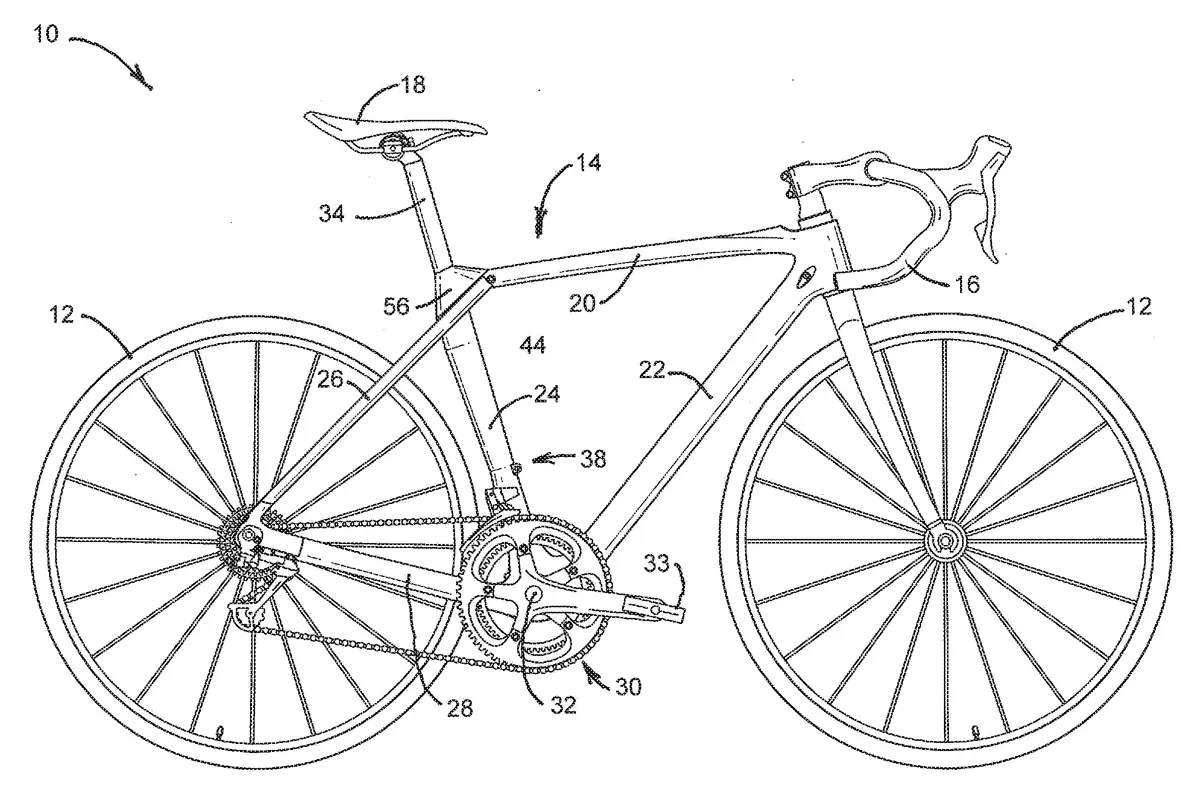
The patent diagrams show a bike that somewhat resembles the current Roubaix – in particular, the area around the upper part of the headset, which looks a lot like the Future Shock 2.0 – but that differs substantially around the seat cluster.
Exploded diagrams and cross-sections show a small shock concealed in the top tube, immediately in front of the seatpost. The shock couples the post to the frame, allowing the latter to move fore and aft as well as slightly up and down.
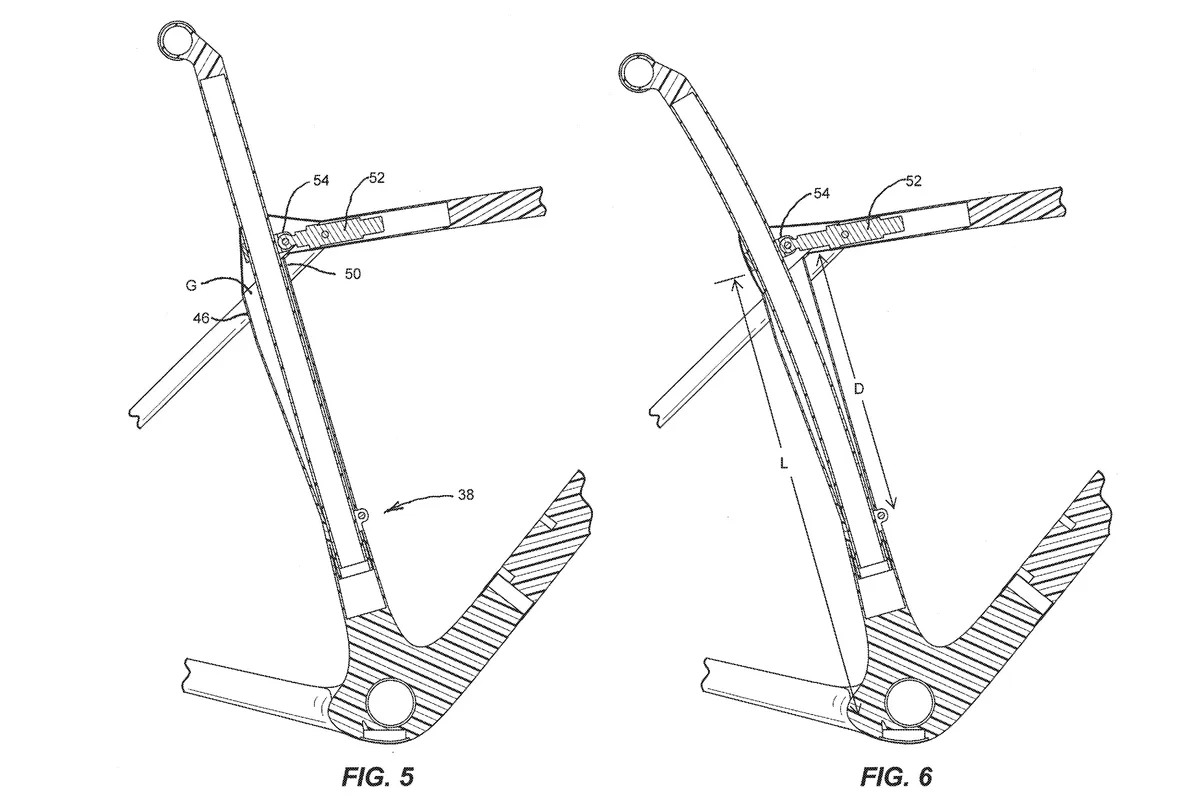
The patent describes this in fairly unambiguous terms: “An upper portion of the seat post is movable relative to the frame between a static first position and a stressed second position. The damping member (e.g., a hydraulic damper) couples the seat post to the frame to dampen movement of the upper portion of the seat post between the first and second positions.”
The diagrams show a seatpost that’s clamped very low down inside the frame. The current Roubaix’s clamp is 65mm below the top of the seat tube, to allow more of the post to flex.
However, in the patent design, the seat clamp (numbered 38) is just above the front derailleur, meaning there’s a huge length of post that’s able to flex.
The text notes that it would be preferable to situate the clamp at least 45 per cent of the way down the length of the seat tube, and the diagrams show it at about 60 per cent.
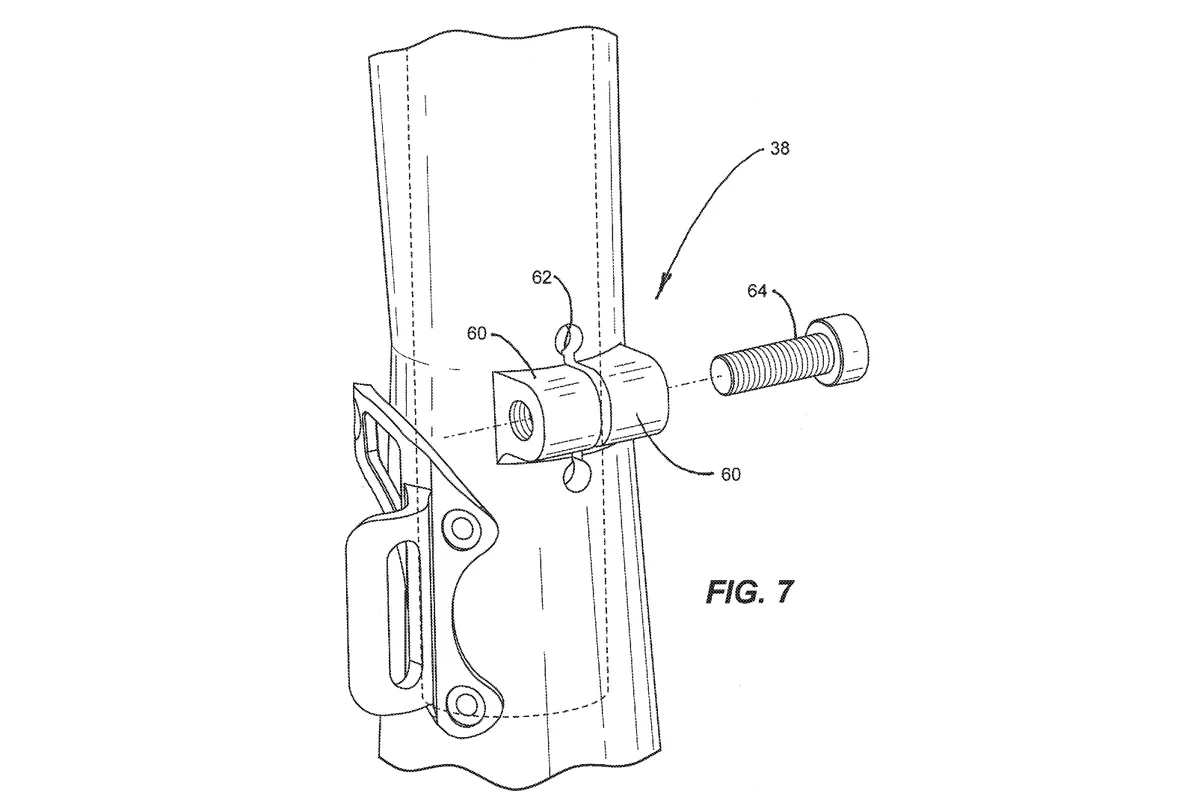
A brief history of rear-end comfort
Traditional road bike frames had a horizontal top tube and a simple two-triangle design that meant most riders had a relatively small amount of exposed seatpost sticking out of their frame.
The Giant TCR, launched in the nineties and now in its ninth generation, popularised the concept of the compact frame, one made up of smaller triangles, with a much larger length of seatpost on show.
Alongside other benefits, this made for a more comfortable bike, as the seatpost was able to flex more freely, reducing the shocks and vibration transmitted from the road to the rider.
In the last few decades, bike designers have experimented with a variety of methods for increasing road bike comfort without sacrificing performance.
These include attaching the seatstays lower down on the seat tube (popularised by BMC), non-round seatposts and frame tubes (Giant's D-Fuse technology), vibration absorption technology (Specialized's Zertz inserts) and more.
Despite appearances at major races like Paris-Roubaix, full-fledged rear suspension for road bikes has yet to gain much momentum as a concept, largely because keeping the weight down to an acceptable level poses a significant engineering challenge.
While the clamp is pictured, the text leaves open the possibility that the seatpost could be allowed to move about a pivot, rather than being fixed at its base, saying that “instead of flexing, the seat post could be designed to pivot or hinge relative to the frame. In such an embodiment, a biasing member would need to be used to bias the seat post toward the raised or unstressed position.”
Specialized’s patent also speculates about the possibility of customising the system’s behaviour to adapt it to different rider weights, riding styles or other preferences, either by changing aspects of the seatpost itself (e.g. material thickness) or via the use of a support bushing fitted in the space inside the frame, behind the seatpost. This hypothetical bushing could be swapped for a stiffer or softer one according to rider needs.
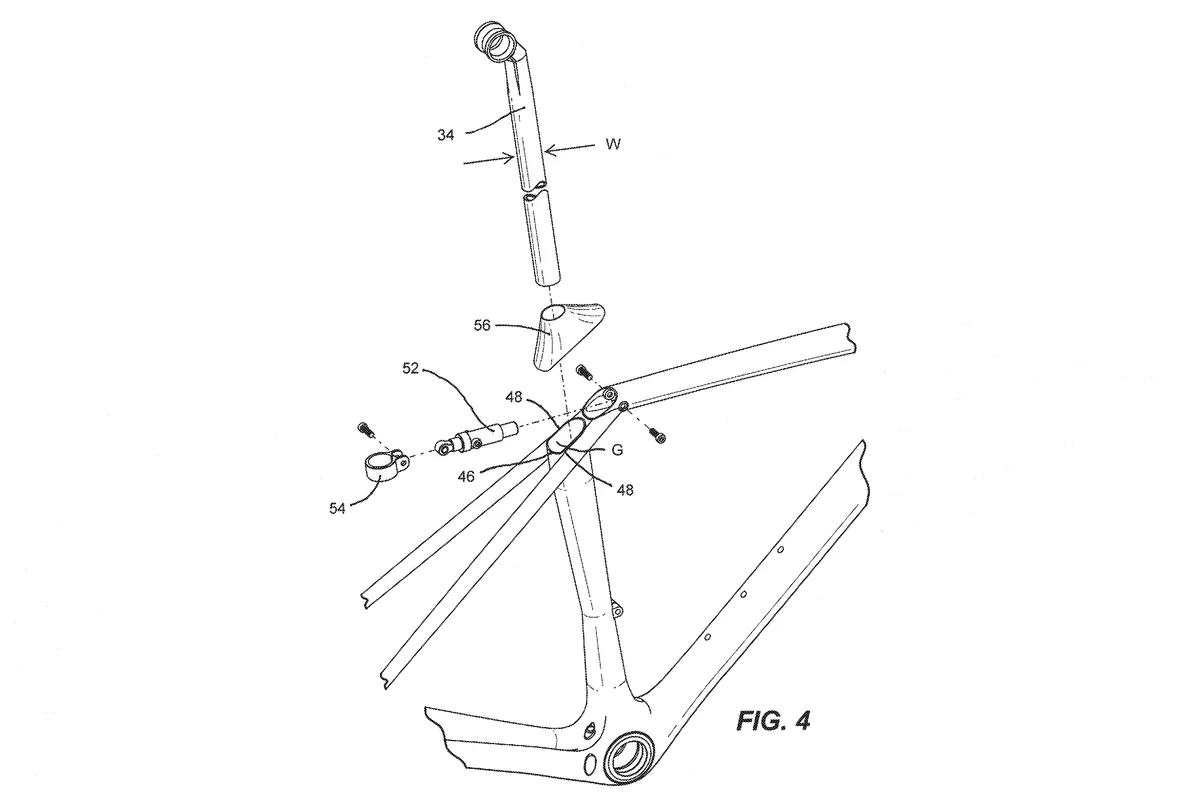
If this patent becomes reality, the rear suspension would be almost entirely hidden from view.
The upper section is concealed underneath a cover made from “a suitable elastomeric material, such as silicone”, just like the upper part of the existing Future Shock.
Will the next Roubaix (or Diverge) be full suspension?
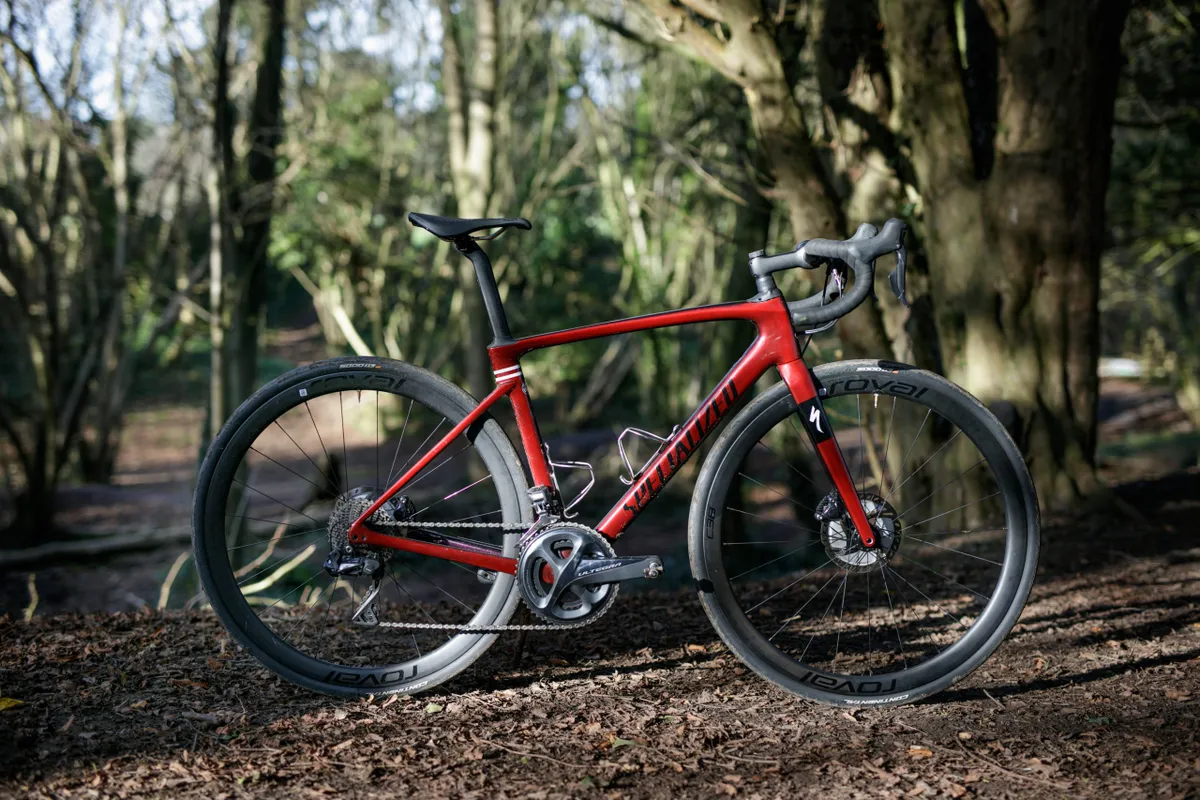
As ever with patents, we have no idea if the concepts presented will make their way onto production bikes.
This patent was filed around a year before the current Roubaix was being launched, but that doesn’t necessarily mean it’s been shelved, as development work on new projects can take years.
Specialized has experimented with various ways of making its endurance road platform more comfortable through successive generations.
Older models featured vibration-damping Zertz inserts in the frame and fork, and the Future Shock front suspension has now featured on two generations of the bike.
Inevitably, adding rear suspension to the Roubaix will pose a challenge to Specialized engineers as performance and comfort gains will need to be balanced against weight and durability, but it’s hardly an outlandish concept.
The current model uses a clever frame and seatpost design to add flex and it’s a supremely comfortable bike (I'm an avowed fan), but actual suspension could take things up another level.
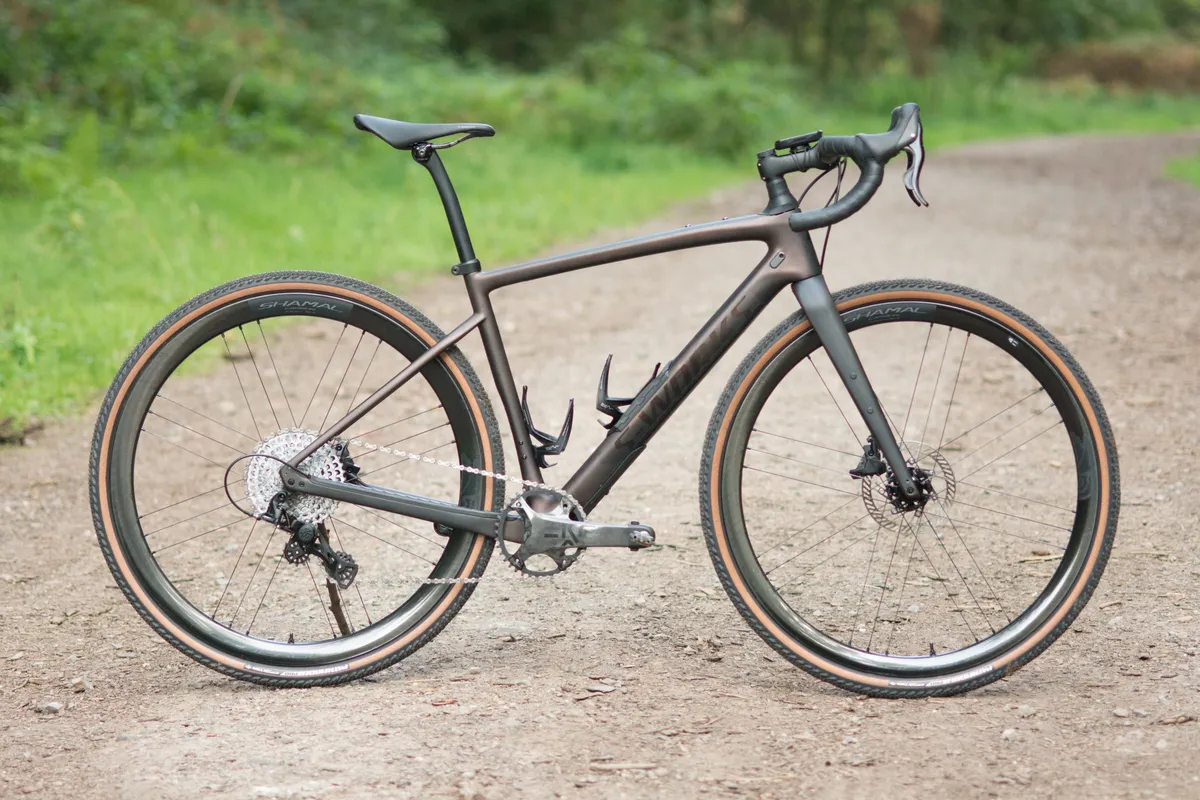
Even if it’s ultimately deemed unsuitable for the road, the Diverge gravel bike would be an obvious candidate for the new system.
While the patent refers to “bicycles designed for paved roads”, Specialized has form with sharing its tech across the platforms, and the current Diverge also uses the Future Shock.
Specialized wouldn’t even be the first to go down this route, with Cannondale's latest Topstone Lefty gravel bike featuring a suspension fork at the front and leaf-sprung rear.
However, if Specialized builds a Roubaix with a sprung rear shock we reckon it would be the first mainstream manufacturer to do so on a pure road bike (although at this point, what is a pure road bike anyway?).

The Pinarello Dogma FS uses an elastomer-based system, as does Wilier’s Cento10 NDR, while the rear IsoSpeed design used on Trek’s outstanding Domane endurance bike is described as a ‘decoupler’.
In fact, the proposed Specialized system appears to have a lot in common with IsoSpeed, but it adds a shock into the mix rather than relying solely on flex built into the seatpost.
If Specialized does bring a full suspension Roubaix to market, it seems unlikely – given the current delays in bicycle production and supply – that it’ll put in an appearance before 2022 at the earliest.
Is suspension on road bikes the next big thing, or is it going too far? Let us know your thoughts in the comments.
Update (18/02/21) – Specialized has issued the following statement in response to this story:
"Specialized’s team of obsessive, driven engineers and designers are constantly developing concepts and technology to improve riders’ experiences—a great example of our Innovate or Die philosophy. Some of these ideas eventually turn into products riders can buy and enjoy, while others remain just part of the development process."
